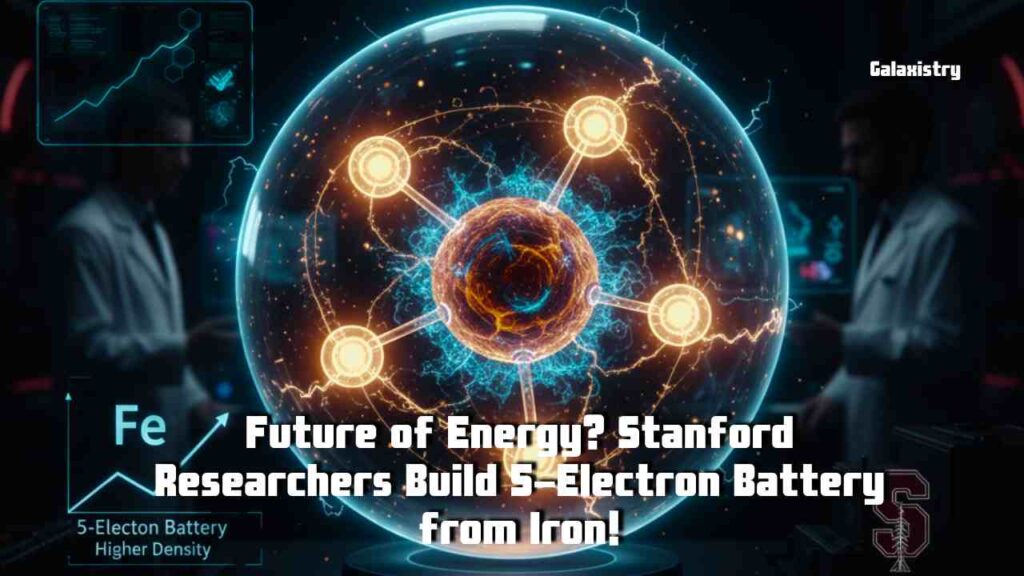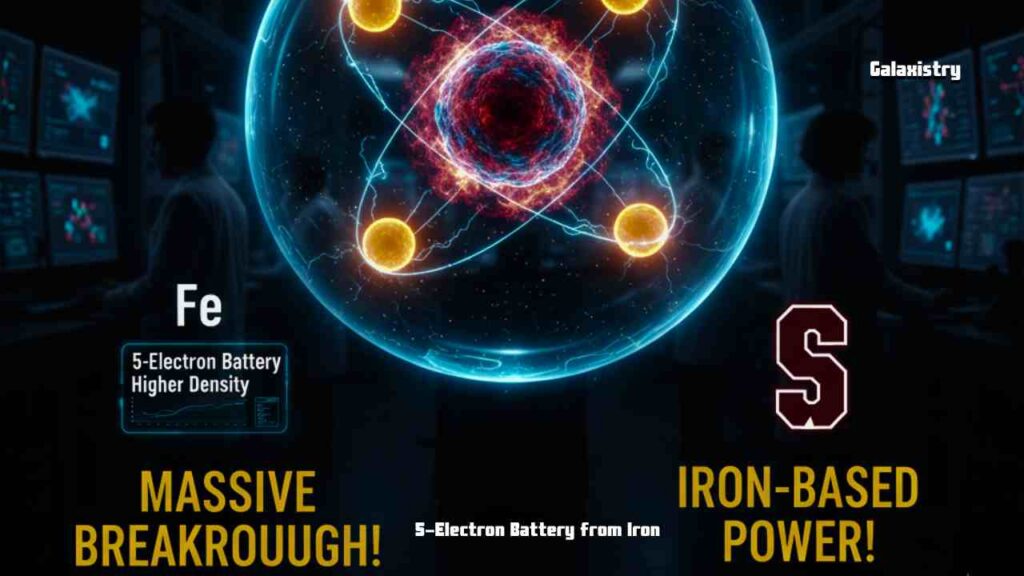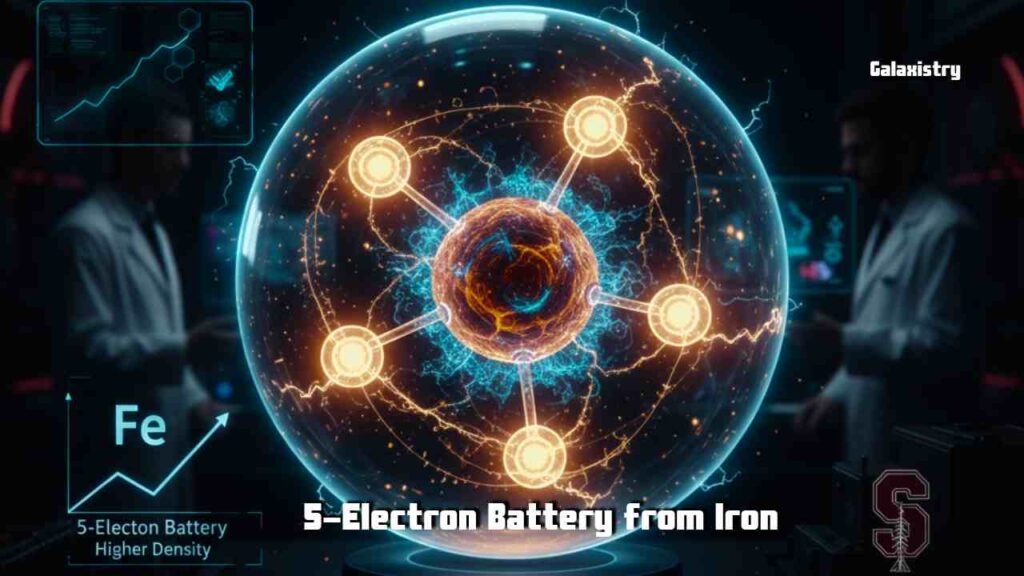5-Electron Battery from Iron: Hello tech enthusiasts! We’re all surrounded by lithium-ion batteries; they power our phones, laptops and electric vehicles (EVs). But lithium comes with two major problems: it’s rare and expensive. For decades the world has been searching for a cheaper, more abundant and safer alternative and that alternative could be iron.
Yes, absolutely! In a recent breakthrough, researchers from Stanford University and the SLAC National Accelerator Laboratory have made a major announcement in the world of R&D. They’ve successfully developed an iron-based battery that breaks all previous limits of energy storage.
This isn’t a small innovation. For the first time, scientists have managed to get iron to give and take five electrons at once; something previously thought impossible as iron was believed to stably exchange only two or three electrons. This Stanford iron battery R&D breakthrough 2025 could completely change the future of grid-scale storage — the massive batteries that power entire cities.

In this report’s in-depth analysis, we will explain what this new discovery is and why the “5-electron” magic is so significant and how it could challenge lithium’s expensive dominance.
Table of Contents
Understand the Innovation: Why ‘Electrons’ Are Everything
The capacity of a battery depends on how many electrons its cathode material can store and release.
Think of it like a “parking garage”:
- Lithium is a small garage that can park only one electron (1-electron) at a time — efficient, but limited.
- Scientists have spent years working on multi-electron materials like Iron. Theoretically, iron can give up to six electrons, making it a “six-story parking garage.”
What was the problem?
Until now scientists could only get 2 or 3 electrons reliably from iron. When they tried to extract more than 3, the entire “garage” (that is, the cathode structure) would collapse. The battery became irreversible and died. But this time, something new has happened.
What is Stanford iron battery R&D breakthrough 2025?

The Stanford team, led by PhD students Hari Ramacharan, Edward Mu and Eder Lomeli solved this collapse problem. Instead of using the iron-based material directly, they treated it in a chemical environment.
How this R&D works:
- The Material: They used a cathode material called iron hexacyanoferrate, a relative of Prussian blue pigment. This material holds iron atoms together in a strong crystal lattice.
- The Breakthrough: The team discovered that when this crystal is mixed with a specific electrolyte called bisalt imide, the electrolyte acts as a ‘supporting pillar’.
- The 5-Electron Magic: This ‘supporting pillar’ prevents the cathode structure from collapsing even when 4 or 5 electrons are forcibly removed from it. This is the first time that scientists have successfully transferred 5 electrons from iron reversibly (i.e., on both the charge and discharge sides).
This Stanford iron battery R&D breakthrough 2025 announcement increases the energy density of the battery many fold.
Why is this innovation important to the world?
This lab breakthrough isn’t just for academics. It will have three major real-world implications:

1. The Future of Grid-Scale Energy Storage:
- This technology isn’t just for your smartphone (because iron batteries are heavier than lithium).
- It’s perfect for grid-scale i.e., those giant battery farms outside your city that store solar and wind energy.
- Lithium is too expensive and scarce for these massive batteries. But iron is one of the most abundant and inexpensive metals on Earth. The Stanford iron battery R&D breakthrough 2025 means we can store renewable energy very cheaply.
2. A huge jump in energy density:
- Energy density refers to how much energy you can pack into one kilogram of material.
- Compared to a 1-electron lithium battery, a 5-electron iron battery can (theoretically) store 5 times more energy.
- This means you’ll need 5 times less space and 5 times less material to store 1 megawatt of energy. This will dramatically reduce costs.
3. MRI and Maglev Technology:
This R&D also has an unexpected benefit. The ability to control iron in this 5-electron state opens new avenues for controlling magnetism.
- This could be used to make next-generation MRI machines more powerful and magnetic levitation (such as Maglev trains) technology more efficient.
Conclusion: The ‘Rebirth of Iron’: 5-Electron Battery from Iron
The Stanford iron battery R&D breakthrough 2025 announcement marks a ‘renaissance’ in battery technology. For decades iron was considered a ‘weaker’ material than lithium. But this Stanford team has proven that with the right chemical environment and innovation, this inexpensive and abundant material can be far more powerful than lithium.
While this technology may be 5 to 10 years away from becoming commercial, it has opened up a cheap and sustainable path to grid-scale storage. This innovation brings us closer to a future where our green energy will be available 24/7, not just when the sun shines or the wind blows.
Also Read: Massive £55 Billion Surge: UK Aims to Rule the Future of AI and Quantum Computing